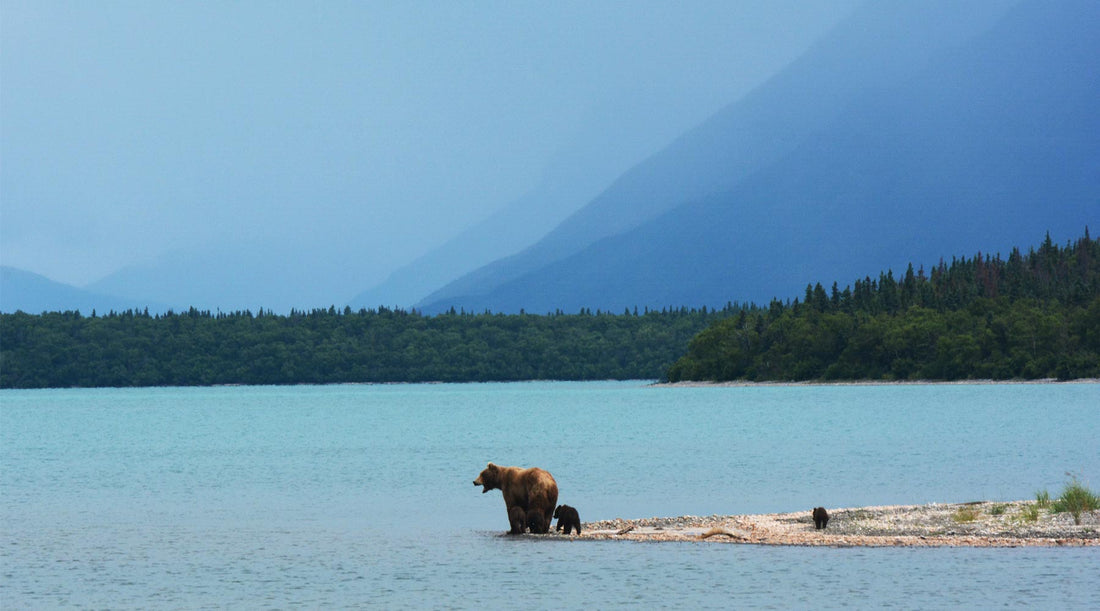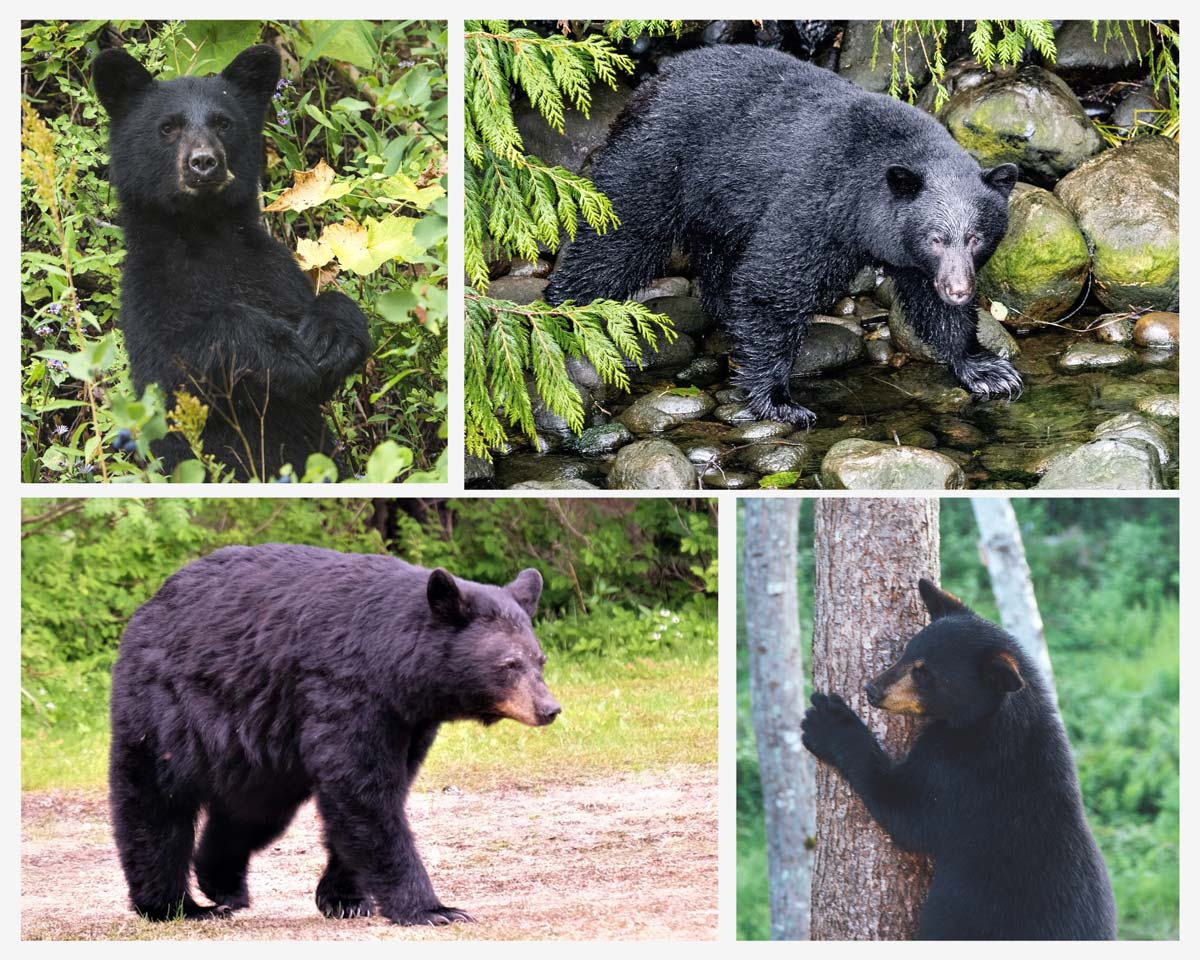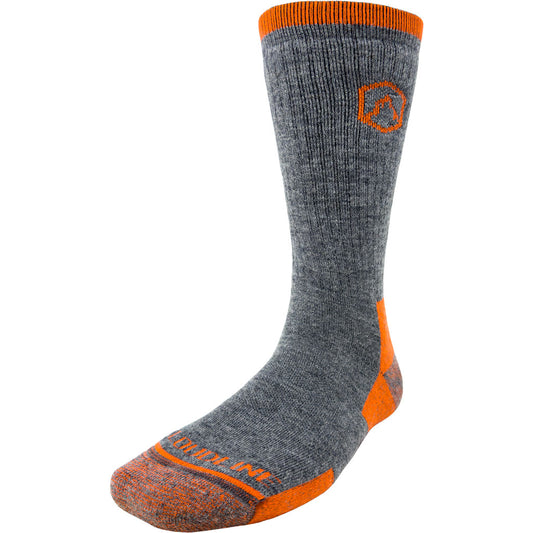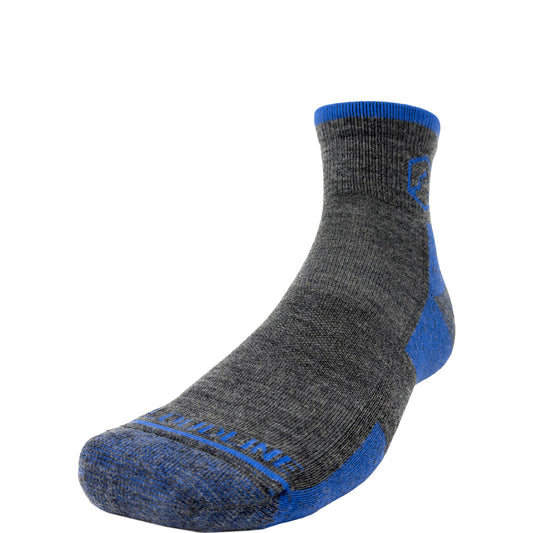
How to Stay Safe When Hiking in Bear Country: Bear Safety & FAQ
If you spend any amount of time on the trail, chances are you’ll be hiking through bear country at some point or another.
This doesn’t mean you should panic — and it doesn’t mean you need to find more indoor pastimes.

Hiking, biking, camping, and other outdoor activities can be quite safe, as long as you take the proper precautions. But bears — like bad weather, difficult terrain, or other wildlife — can pose a risk.
As with any outdoor pursuit, your safety comes with preparedness. If you know when and where you might come across bears — and how to react if you do — it’s more than likely you’ll never have a dangerous encounter.
In this blog, we’ll dig into the facts with bear FAQs. Then we’ll dive into how to avoid dangerous encounters and what to do in the unlikely event you face one.
Bear Safety FAQs

Where do bears live?
North America is home to grizzly bears, black bears, and polar bears. Grizzlies live in Alaska, Washington, the Northern Rockies (Montana, Idaho, Wyoming), and Canada. Black bears are more common and live in much of the US, most of Canada, and some of Mexico. Polar bears only live in the northern reaches of Alaska and Canada.
What kind of bears can I see on the trail?
In the U.S., you’re most likely to see a black bear on the trail. If you’re hiking in Alaska, Montana, Wyoming, Idaho, or Washington, it’s possible to see grizzly bears, too.
What’s the difference between a grizzly and a black bear?
Both grizzly and black bears can be a range of colors, so other physical differences are important to know.
Grizzly bears

How to Identify a Grizzly Bear:
- Are bigger (males weigh up to 700 pounds)
- Have a pronounced shoulder hump
- Have long claws
- Have smaller, rounded ears
- Have a dish-shaped (concave) facial profile
Black bears

How to Identify a Black Bear:
- Are smaller (males weigh up to 300 pounds)
- Do not have a shoulder hump
- Have short claws
- Have bigger, slightly pointed ears
- Have a flat facial profile
Do bears attack humans?
Rarely. Most bears want to avoid humans. Usually, there’s an obvious reason for a bear attack — like protecting food, cubs, or territory.
What is bear spray, and do I need it?
Bear spray is an aerosol deterrent made of capsaicin, a compound found in peppers. Essentially, it’s a really strong pepper spray that temporarily irritates a bear’s eyes and respiratory system. If you’re hiking in areas with a dense bear population — particularly grizzly bears — you should carry bear spray and know how to use it.
Do bears hibernate?
Technically, no — but they hole up in their dens and enter a similar state of torpor for much of the winter. It’s unlikely you’ll see bears out and about during the winter months, but it’s not unheard of.
How to Avoid Bears When Hiking
The best way to keep yourself and bears safe while on the trail is to avoid close encounters in the first place. Here are the best ways to make sure you don’t get too close:
- Hike or recreate in groups of 3 or more: The vast majority of bear attacks happen to groups of 2 or single hikers. There really is safety in numbers.
- Make noise on the trail: You don’t want to surprise a bear. It’s best if it hears you coming, because your presence will likely scare it off. Talk, clap, and shout every so often to make your presence known.
- Be (bear) aware: Don’t hike with your head down. Keep your eyes up and be alert in case you see a bear before it sees, hears, or smells you. Just as you don’t want to surprise a bear, you don’t want bears to surprise you.
- Hike during the day: Bears are most active at dawn and dusk, so hike in the daylight when they’re avoiding the heat of the day. Plus, the daylight allows you to be more aware of your surroundings.
- Understand bear behavior: Bear behavior varies by location, season, and species. Know what to expect before hitting the trail. When do bears emerge from their dens? What do they eat during each season? Where are you most likely to see them?
- Don’t leave food or trash unattended: Odors can attract bears, and eating human food or trash can lead to harmful bear behavior — harmful for both bear and human.
If You Do See a Bear…
If you do happen to see a bear on the trail, it can be both an exciting and nerve-wracking experience. As a rule of thumb, you never want to be within 100 yards of a bear (unless you’re in a vehicle or building). Seeing a bear from a safe distance — with the knowledge and resources to act appropriately if it approaches — can be a truly unforgettable experience.
However, bears are wild, and you can never predict exactly how they’ll respond to your presence. That’s why it’s important to know what to do in different situations.
If, while on the trail, you see a bear but the bear doesn’t see you, quietly and slowly leave the area. Keep an eye on the bear as you walk away.
If the bear does see you, here’s what to do — and what not to do:
Do
- Show the bear you’re human: Speak calmly and in a low tone while slowly raising and waving your arms
- Make sure your bear spray is accessible and within reach
- Slowly back away
As counterintuitive as it feels, the best thing to do is to stay calm and slowly put space between you and the bear. You want it to see you as a human — not prey, but not a threat, either.
Don’t
- Run
- Climb
- Scream
- Make any sudden movements
- Make eye contact
- Fight
Any of the above responses make you seem like a threat — or prey — to a bear. Don’t act like either. And remember, no human can outrun or outclimb a bear.
What to Do if a Bear Approaches You
If you’ve taken the above precautions, it’s unlikely a bear will approach you. But if it happens, it’s important to know what kind of bear you’re dealing with. Different responses are best for different types of bears, as we’ll cover below.
You should also know the difference between a bluff charge and an aggressive charge — one is usually harmless and the other can be dangerous.
Bluff charges happen more often. They’re meant to scare you off. The bear’s head and ears will be up and it will charge before stopping or veering off to avoid you. If a bear bluff charges you, use the same tactics above to slowly back away and show it you’re human.
Aggressive charges are rare and dangerous. During an aggressive charge, a bear will have its head down and ears back. While highly unlikely, it’s important to know how to react to an aggressive charge:
- If it’s a black bear: Fight back. Use anything you have as a weapon to defend yourself, and aim any punches or kicks at the bear’s face.
- If it’s a grizzly bear: Play dead. Lay on your stomach, keep your backpack on, and use your hands to cover your head. Be still and quiet, and don’t move for several minutes after the bear leaves. In the even more unlikely case that the bear doesn’t retreat, then you can fight back. Use this tactic only as a last resort.
Stay Safe in Bear Country
Bears are fascinating creatures, and it’s exciting to see them in the wild. But it’s crucial — for your own safety and for the bears’ — that you take thorough precautions when hiking through or camping in their habitat.
Want more safety tips for the trail? Subscribe to our email list to get our latest blogs sent straight to your inbox. See you on the trail!




